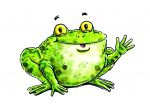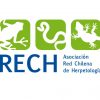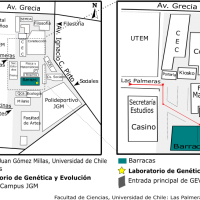PROJECTS
RESEARCH
Our research line is focused towards the integral study of the variation of characters in an interspecific and intraspecific level, simultaneously considering different ecological (at different analytic level) and historical (phylogeny) aspects. Using different species as models, we inquire the processes and mechanisms that would show differences between populations. To infer processes at a proximal scale we use traditional morphometric and geometric tools, of quantitative genetics (common garden experiments), fieldwork and different DNA sequencing technics. To infer historical processes, we use mitochondrial and nuclear genes applying methods such as phylogeographic, phylogenetic and comparative methods. As an emergent research line, we’ve put our interest in conservation genetics, emphasizing on the genetic and evolutionary components of the different linage and their relationship with landscape genetics.
HISTORY
Our research projects in the past 15 years have been directed mainly to studying the evolution of the Altiplano’s species (Andean Plateau) and the systems that maintain them (lakes, lagoons, bofedales and rivers). This research line corresponds to a collaborative effort between scholars of different faculties addressing a problem of national importance related to the information needed for making decisions about the management of hydric resource in the XV, I, II Región of Chile. Since there’s previous precarious and disperse knowledge about the biodiversity in these systems, we have made the attempt, using a multidisciplinary and collaborative approach, to contribute knowledge about this system, through: a) phylogenetic reconstructions on model species (fish of the genus Orestias, snails of the genus Biomphalaria and Heleobia, amphibians of the genus Rhinella and Telmatobius), b) characterization of each system in abiotic (salinity, pH, oxygen concentration, among others) and biotic terms (biodiversity, biogeographic relationships and history). For this we have used different approaches: limnology, ecology, population genetics, phylogenetic studies, genomics and transcriptomics.
NEWS

Understanding Evolutionary Biology for Chilean Secondary School teachers
During 2017, GEVOL received outreach funds from the European Society for Evolutionary Biology (ESEB), to realize the project “Understanding Evolutionary Biology for Chilean Secondary School teachers: improving teaching activities and educational material in the classroom”.

National Wildlife Day
Past 4th of November, on behave of the conservation project for the Chilean Toad (Calyptocephalella gayi), we participated in an event organized by the Jane Goodall Institute and the Chilean National Museum of Natural History. Here we participated with a stand entitled #SalvaTuRana (Save the frog).

Best project in the XII Regional School Congress of Science and Technology
We would like to congratulate Pilar Carrasco, Josefina Lillo, Beatriz Fonseca and Isol Barraza for their participation in the XII Regional School Congress of Science and Technology 2017. They’re all secondary students and attend Liceo N°1 Javiera Carrera, in Santiago. Their project was tittle “Reconocimiento y descripción de moluscos del intermareal del litoral central” (Recognising […]

First place in Science Fair
We would like to congratulate Carla, Valentina and Francisco for their first place price obtained in The Science Fair at Alexander Fleming School (their school). These secondary students participated in an internship in our lab and presented their results at this fair. They learned the basics of evolutionary biology and phylogenetics. During two months they […]




